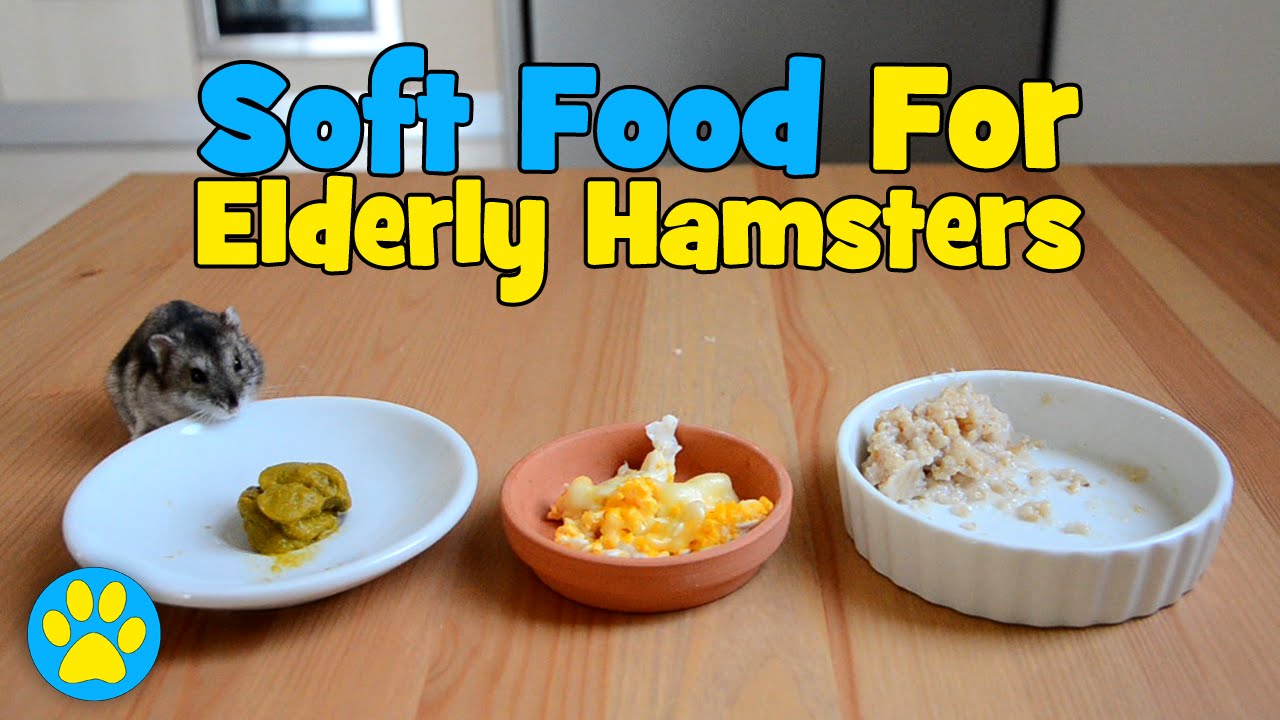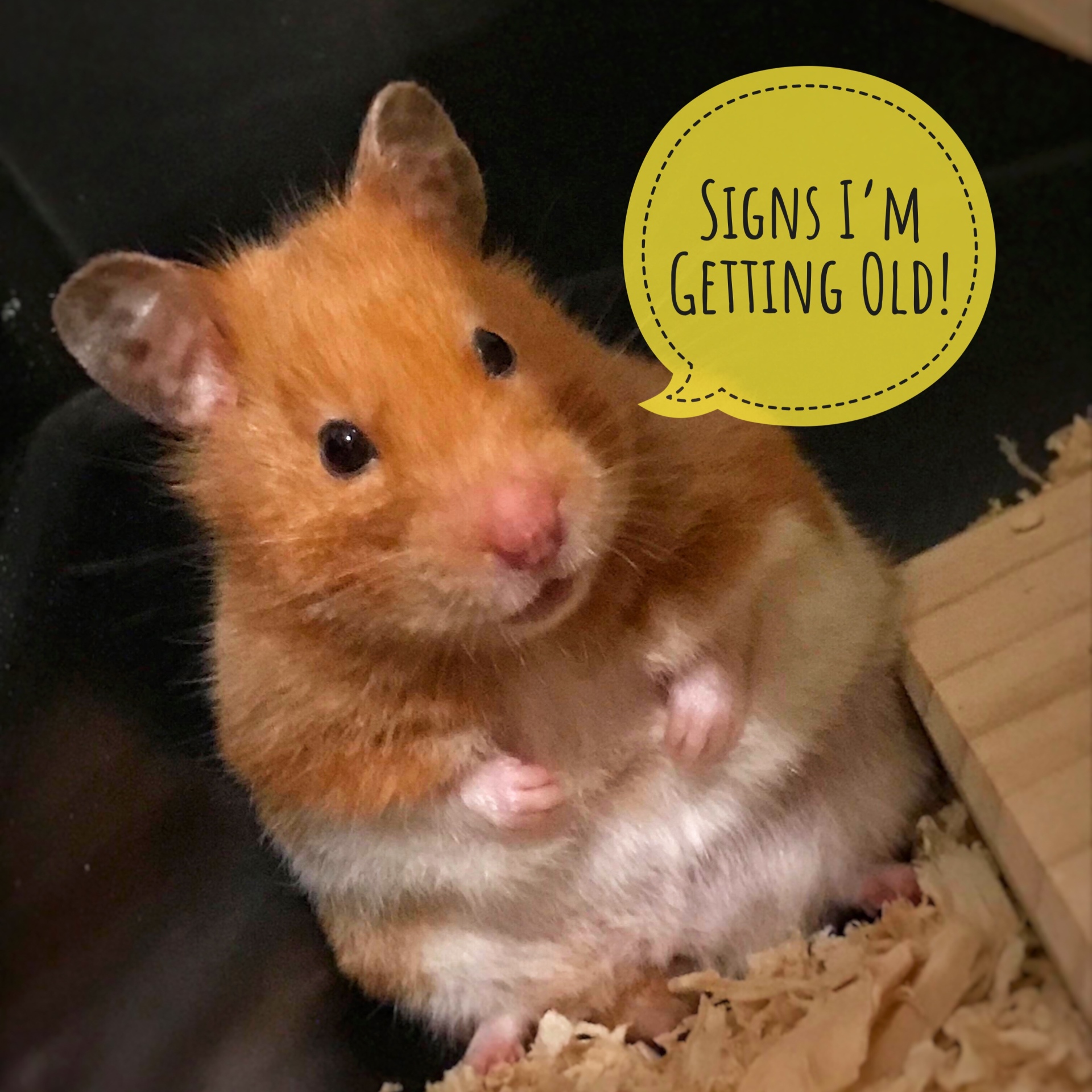Key Takeaways
-
Senior hamsters require a diet tailored to their reduced calorie needs and potential dental issues.
-
Orthopedic bedding provides comfort and prevents injuries, and should be changed regularly.
-
Exercise wheels must be safe and suitable for elderly hamsters, with modifications if necessary.
-
Specialty foods should be soft, high in fiber, and cater to the changing appetites of aging hamsters.
-
Regular veterinary check-ups and monitoring for behavioral changes are crucial for senior hamster care.
Elderly Hamster Nutrition: Serving Up Health in Their Golden Years
Understanding Senior Hamster Dietary Needs
As our furry friends age, their dietary needs shift. A senior hamster’s metabolism slows down, which means they don’t need as many calories as they used to. However, it’s not just about reducing the amount of food; it’s about providing the right kind of nutrients. Think of it like this: you wouldn’t feed a spry teenager the same way you would a grandparent, right? The same goes for your hamster. For more detailed guidance, consider reading about what not to do when caring for a senior hamster.
Most importantly, you’ll want to focus on a balance of fiber, protein, and fat that’s appropriate for an older hamster. Because they’re less active, too much fat can lead to obesity, while too little protein can cause muscle loss. And fiber? That’s crucial for maintaining a healthy digestive system.
Here’s what you need to do:
-
Gradually adjust your hamster’s diet to include more fiber-rich foods like Timothy hay.
-
Ensure the protein source is of high quality, such as cooked eggs or mealworms, but offer it in moderation.
-
Limit high-fat seeds and treats that could contribute to unhealthy weight gain.

“3 Soft Foods For Elderly Hamsters – YouTube” from m.youtube.com and used with no modifications.
Supplements and Vitamins for Aging Hamsters
Just like humans, hamsters can benefit from a little nutritional boost as they get older. Vitamins and supplements can help fill any gaps in their diet. But, you’ve got to be careful not to overdo it—too much of a good thing can be harmful.
For example, vitamin C is great for preventing scurvy, a common issue in guinea pigs and potentially in hamsters too. However, unlike guinea pigs, hamsters can produce vitamin C on their own, so they don’t need as much from their diet. It’s all about balance.
Therefore, before adding any supplements to your hamster’s diet, consult with a vet who can recommend what’s best for your pet’s specific needs.
Portion Control: Preventing Obesity in Elderly Hamsters
As hamsters age, it’s crucial to focus on proper nutrition and portion control to prevent obesity, which can lead to other health issues. It’s important to provide specialty foods designed for senior hamsters that cater to their changing dietary needs.
It’s easy to overfeed a pet out of love, but when it comes to senior hamsters, portion control is key. A chubby hamster might look cute, but obesity can lead to serious health issues like diabetes and heart disease.
Here’s how to keep your hamster’s weight in check:
-
Measure their food to ensure they’re getting the right amount each day.
-
Monitor their weight regularly to catch any changes early.
-
Offer fresh vegetables as a low-calorie snack option.
Orthopedic Bedding for Comfort and Care
Choosing the Right Bedding Material
When selecting bedding for your senior hamster, it’s important to consider materials that will not only be comfortable but also supportive for their aging bodies. One excellent option is orthopedic bedding, which can provide the necessary support for hamsters with arthritis or other joint issues.
Comfort is crucial for senior hamsters, and the right bedding can make all the difference. As they age, hamsters can develop arthritis or become more prone to injuries. Therefore, the bedding needs to be soft yet supportive.
Opt for paper-based or aspen shavings bedding, which are gentle on delicate paws and don’t pose the risk of respiratory issues that pine or cedar shavings do. Avoid using cotton or fluffy bedding, as these can cause intestinal blockages if ingested.
How Often to Change Orthopedic Bedding
Keeping the bedding fresh isn’t just about odor control; it’s about hygiene and health. Old bedding can harbor bacteria and parasites, which are especially harmful to a senior hamster’s weaker immune system.
Change the bedding at least once a week, but be prepared to do it more often if you notice it getting damp or dirty. Remember, a clean cage is a healthy cage!
Preventing Injuries with Soft, Supportive Bedding
Ensuring your senior hamster has the right orthopedic bedding is crucial for preventing injuries and providing a comfortable resting environment.
When it comes to your hamster’s bed, think plush and cozy. A soft bed will not only be more comfortable but can also help prevent injuries like sores or bumblefoot, which is more common in older hamsters.
Provide a thick layer of bedding so your hamster can burrow without straining their joints. This will also help them feel secure and safe, which is important for their overall well-being.
As hamsters age, they require special care and attention to maintain their health and well-being. Senior hamsters may need adjustments in their diet to ensure they get the necessary nutrients without overexerting their digestive system. It’s important to provide elderly hamster nutrition that is tailored to their changing needs, which may include softer food or supplements. Additionally, orthopedic bedding can help to support their aging joints, ensuring they remain comfortable and free from pain. Senior activity programs that cater to the reduced mobility of older hamsters can keep them engaged and active, while specialty foods formulated for senior pets can help manage weight and support overall health. Exercise wheels designed for older hamsters can also be a great way to encourage gentle exercise and maintain muscle tone.
Enrichment Ideas Outside of the Cage
Senior hamsters may not zip around like they used to, but that doesn’t mean they don’t crave adventure and stimulation. Enrichment is key to keeping their minds sharp and their spirits high. Think of enrichment as the hamster equivalent of a crossword puzzle or a stroll in the park for humans. It’s about providing activities that engage their natural behaviors, such as foraging, exploring, and problem-solving.
Here are some enrichment ideas:
-
Create a maze out of cardboard boxes with treats hidden at the end.
-
Offer chew toys that help maintain dental health and keep them busy.
-
Introduce new scents in their play area by using hamster-safe herbs or flowers.
Monitoring and Encouraging Activity in Senior Hamsters
Just like with older humans, you’ll want to keep a close eye on your senior hamster’s level of activity. It’s a delicate balance; too little activity and their health can decline, but too much and they might overexert themselves. Pay attention to how your hamster moves and how much they’re willing to do each day.
Encourage gentle exercise by providing appropriate activities for your senior hamster.
-
Placing their favorite treats a little further away in their cage to promote movement.
-
Ensuring their cage has a flat area where they can walk easily without obstacles.
-
Rotating different toys and activities to keep them interested without overwhelming them.
Remember, the goal is to support their well-being, not to push them beyond their limits.
Specialty Foods: Tailoring Diet to Aging Hamsters
Soft Foods for Easier Consumption
As hamsters age, they may lose teeth or experience dental issues, making it harder for them to eat their usual hard pellets or seeds. This is where soft foods come in handy. They’re easier to consume and can be very comforting for a senior hamster.
Consider these options:
-
Mashed vegetables like carrots or peas, which are easy on the teeth and full of nutrients.
-
Cooked grains such as rice or oatmeal, which provide energy without the need for intense chewing.
-
Pureed fruits, in moderation, as a sweet treat that’s also soft and easy to eat.
Integrating High-Fiber Options
Fiber is incredibly important for an aging hamster’s digestive system. It helps keep things moving and prevents issues like constipation, which can be common in less active pets. High-fiber foods are a must in a senior hamster’s diet.
Here’s what to integrate:
-
Timothy hay, which is not only high in fiber but also encourages natural foraging behavior.
-
Fresh vegetables, such as broccoli or spinach, which provide both fiber and essential vitamins.
-
Whole grains, like barley or brown rice, which offer a fiber boost and are also tasty.
Responding to Changes in Appetite and Weight
As hamsters enter their senior years, you might notice changes in their appetite and weight. Some days they might not eat as much, and other days they might seem hungrier. It’s important to respond to these changes thoughtfully.
If you notice your hamster is losing weight, it could be a sign of dental issues or other health problems, and you should consult your vet. Conversely, if your hamster is gaining weight, you might need to adjust their diet to prevent obesity.
Keep a weekly log of their weight and eating habits to help you and your vet spot any concerning patterns early on.
Orthopedic Accessories: Enhancing Quality of Life
When to Introduce Orthopedic Accessories
Just like humans, hamsters can develop joint pain and stiffness as they age. Orthopedic accessories can provide relief and improve their quality of life. But when is the right time to introduce these items? Look for signs like difficulty in moving around, reluctance to exercise, or changes in how they sleep.
If you notice any of these signs, it’s time to consider orthopedic options, such as:
-
Soft nesting materials that support their body and provide warmth.
-
Low-profile platforms that give them a place to rest without climbing.
-
Padded floor mats that cushion their feet and joints.
Supportive Devices for Aging Hamsters
Supportive devices can go a long way in making your senior hamster’s life more comfortable. There are various options available that cater to different needs, from ramps that help them climb to softer wheels that are gentle on their joints.
Consider these supportive devices:
-
Ramps with a gentle incline to help them access different levels of their cage without jumping.
-
Exercise balls designed for gentler movement, allowing them to explore outside the cage safely.
-
Adjustable water and food dishes that can be set at the right height to prevent strain.
Evaluating Your Hamster’s Response to New Accessories
When you introduce a new accessory, keep a watchful eye on how your hamster interacts with it. Not all hamsters will take to every accessory, and that’s okay. The key is to observe and adjust based on their preferences and abilities.
Ask yourself: could engaging in play therapy techniques and strategies benefit your pet?
-
Is my hamster using the new item, or are they avoiding it?
-
Do they seem more comfortable and active since introducing the accessory?
-
Are there any signs of distress or confusion when they encounter the new item?
Your observations will guide you in making the best choices for your pet’s individual needs.

“Signs of An Ageing Hamster – Fantastic …” from fantasticfurries.wordpress.com and used with no modifications.
Tailored Exercise Wheels: Ensuring Safe Physical Activity
Exercise wheels are a staple in any hamster’s life, but as they get older, the standard wheel might not be the best fit. Senior hamsters need wheels that are safe and accommodate their slower, more cautious movements.
Here’s how to tailor the exercise wheel experience for your senior hamster:
-
Choose a wheel with a solid surface to prevent their tiny feet from getting caught.
-
Ensure the wheel is large enough so that their back doesn’t arch uncomfortably while running.
-
Opt for a wheel that spins easily without too much resistance, to prevent strain.
“Remember, the goal of exercise for a senior hamster isn’t to set speed records—it’s to maintain mobility and enhance their quality of life.”
By keeping these tips in mind, you’ll ensure that your senior hamster can enjoy their exercise safely and comfortably.
Exercise isn’t just about the wheel, though. Sometimes, a hamster may show little interest in their wheel, and that’s when you need to get creative. Encourage movement by rearranging their cage regularly, providing tunnels for exploration, or setting up a hamster-safe play area outside the cage where they can roam under your supervision.
Ultimately, senior hamster care is about adapting to their changing needs with patience and love. By providing the right nutrition, comfort, and stimulation, you can help your elderly hamster enjoy their golden years to the fullest.
Modifying Existing Wheels for Elderly Hamsters
It’s essential to adapt exercise wheels for elderly hamsters to prevent injuries and ensure they can still enjoy a good run. Start by choosing a wheel with a solid running surface and no crossbars or gaps. This design helps protect delicate paws and limbs from getting caught. Additionally, the wheel should be low to the ground to make it easy for your senior hamster to get on and off without the risk of falling.
Age-Appropriate Exercise Regimens
As hamsters age, their exercise needs change. It’s important to create a regimen that keeps them moving without causing stress or injury. Here’s what you can do: consider water rehab exercises which can be adapted for hamsters to ensure low-impact, effective exercise.
-
Limit wheel running time to short sessions to prevent overexertion.
-
Introduce gentle play sessions outside the wheel, such as exploring a hamster-safe playpen.
-
Encourage natural behaviors like foraging by hiding food around their cage for them to find.
Recognizing Signs of Fatigue and Overexertion
Keep an eye out for signs that your senior hamster might be getting too much exercise. If they’re panting, lethargic, or show a lack of interest in activities they once enjoyed, it may be time to slow things down. Always ensure they have a quiet, comfortable place to rest after exercise.
Remember, the best exercise for a senior hamster is the kind that they can do at their own pace, without any pressure or stress.
When in doubt, consult with your veterinarian to create a customized exercise plan that suits your hamster’s specific health and mobility needs.
FAQ
Got questions about caring for your senior hamster? Here are some answers to common concerns:
What are the signs of nutritional deficiency in elderly hamsters?
Nutritional deficiencies can manifest in various ways. Look out for signs such as dull or thinning fur, lack of energy, and sudden weight loss. If you notice any of these symptoms, it’s important to review their diet with your vet.
-
Dull, thinning fur
-
Lethargy or lack of energy
-
Weight loss or gain
-
Changes in stool consistency
If you suspect a nutritional deficiency, a vet visit is in order to address the issue and adjust your hamster’s diet accordingly. For further guidance, you might want to read about what not to do when caring for a senior hamster.
How often should I replace the orthopedic bedding in my hamster’s cage?
The orthopedic bedding in your hamster’s cage should be replaced weekly to maintain hygiene and comfort. If your hamster is particularly messy or has a health condition that requires a cleaner environment, you may need to change the bedding more frequently.
Consistent bedding changes will not only keep your hamster comfortable but also prevent health issues related to unclean living conditions.
How can I tell if my senior hamster is getting enough exercise?
Observing your hamster’s behavior is key to determining if they’re getting enough exercise. A healthy senior hamster should be curious and willing to explore, though at a slower pace than a younger hamster. They should engage with their environment and show interest in their exercise wheel or other activities.
If they seem disinterested or lethargic, it may be a sign that they need more stimulation or a check-up with the vet.
Are there any specialty foods I should avoid giving my elderly hamster?
Yes, there are certain foods you should avoid giving to your elderly hamster. These include:
-
High-sugar fruits and treats, which can lead to diabetes and obesity.
-
Hard nuts and seeds that can be difficult for them to chew, especially if they have dental issues.
-
Any food that is not specifically recommended for hamsters, as it may contain harmful ingredients.
Always check with your vet before introducing new foods into your hamster’s diet, and consider exploring hamster fitness ideas to maintain their health.


